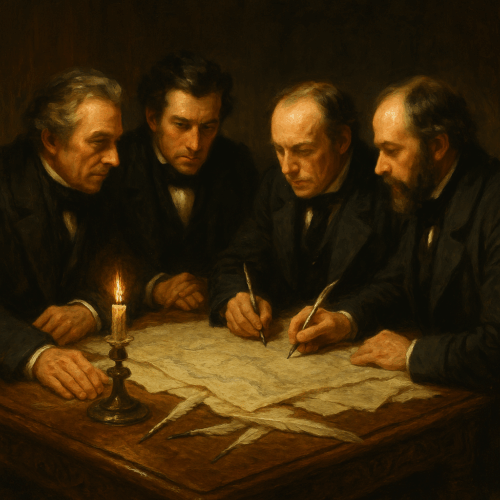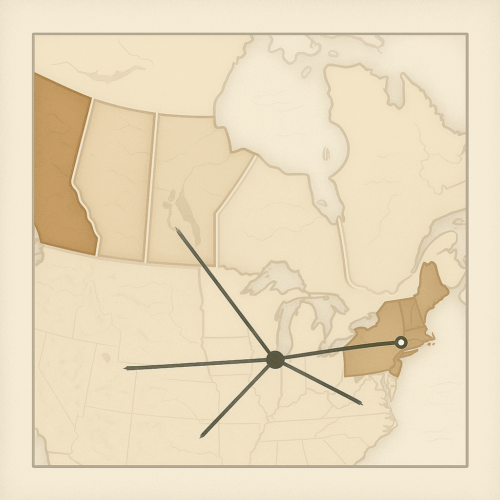On July 1, 1867, four British North American colonies—New Brunswick, Nova Scotia, Ontario and Quebec—joined forces under the British North America Act to form the Dominion of Canada. What began as a bold experiment in shared governance became a defining moment in building a nation rooted in compromise, vision and collective will.
Today, the story of Canada’s Confederation offers more than a page in a history book—it serves as a living blueprint for anyone striving to turn disparate ideas, personalities or teams into a united, unstoppable force.

—
## The July 1, 1867 Confederation: Birth of a Nation
In the mid-19th century, British North America faced political gridlock, economic uncertainty and border tensions with a young United States. Each colony clung fiercely to local interests, yet leaders recognized that independence from Britain—if ever achieved—would be near impossible in isolation.
Key moments that led to Confederation:
– **Charlottetown Conference (September 1864):** Originally a meeting about Maritime Union, delegates from Ontario and Quebec crashed the party. What began as a two-province discussion exploded into an inter-colonial brainstorming session on how to merge resources, defense and infrastructure.
– **Quebec Conference (October 1864):** Seventy-two resolutions hammered out the division of powers between a central government and regional assemblies. Here, “Responsible Government”—where executive power answered to elected representatives—took shape.
– **London Debates (1866–67):** Delegates faced stiff opposition in the British Parliament. Through relentlessness, they secured Royal Assent for the British North America Act, paving the way for Canada’s official founding on July 1, 1867.
This union was far from easy. Diverse cultures, competing economies and regional rivalries had to be navigated through patience, mutual respect, and unwavering determination.

—
## Crafting Unity Through Compromise
At its core, Confederation was about weaving separate threads into a single fabric. Founding figures demonstrated key principles that resonate today:
- **Seeking Common Ground**
Instead of bulldozing over local priorities, negotiators discovered overlapping needs—railways for trade, defense against American encroachment, and shared fiscal stability.
- **Balancing Autonomy and Central Power**
Provinces retained control over education and local matters, while Ottawa managed defense and inter-provincial trade. This synergy allowed both unity and diversity to flourish.
- **Championing Inclusivity**
Although imperfect by modern standards, the founders engaged French- and English-speaking delegates, setting a precedent for bi-cultural respect.
- **Enduring Patience**
Major agreements took years of dialogue. Commitments were honored gradually, accentuating trust over time.
- **Visionary Leadership**
John A. Macdonald and George-Étienne Cartier painted a compelling portrait of what Canada could become—greater than the sum of its parts.

—
## Lessons in Leadership and Negotiation
How did these 19th-century visionaries transform fierce independence into collaborative progress? Their journey offers timeless leadership and negotiation lessons:
– **Define a Shared Vision First**
A clear “north star” kept debates on track. Problem-solving hinged on answering: “What kind of country do we want in 50 years?”
– **Listen with Empathy**
Delegates paused to understand local fears—Maritimers worried about eastern dominance; Ontarians feared fiscal free-riders. Addressing these head-on fostered goodwill.
– **Frame Win-Win Solutions**
Rail promises appeased eastern provinces; federal assumption of colonial debts relieved financial strain in the west. Crafting mutual gains cemented alliances.
– **Break Big Goals into Smaller Milestones**
From conference agreements to parliamentary votes, each success built momentum. Celebrating early wins galvanized support for the next challenge.
– **Cultivate Personal Relationships**
Late-night socials and handwritten letters built rapport beyond official chambers. Trust between delegates often outweighed the letter of any agreement.
—
## Applying Confederation Principles to Your Life
Imagine applying this blueprint to your personal or professional journey. Whether you’re assembling a startup team, uniting community volunteers, or forging stronger family ties, these Confederation-inspired strategies can ignite meaningful collaboration.
### Key Takeaways for Today
– Establish a **compelling shared vision** that motivates everyone involved.
– Engage all voices actively—**true listening** prevents hidden resentments.
– Identify **complementary strengths** and tailor roles accordingly.
– Layer your approach: start small, secure quick wins, then tackle bigger challenges.
– Invest in **rapport-building**—relationships are the glue of any alliance.

—
## Step-by-Step Plan to Build Your Personal Confederation
Ready to transform your own patchwork of skills, perspectives and resources into a powerhouse of collaboration? Follow this four-week plan, rooted in the spirit of 1867’s Confederation.
### Week 1: Forge Your Shared Vision
– **Day 1–2:** Host a vision-casting session. Invite all stakeholders (team members, family, peers) to share hopes and fears.
– **Day 3:** Synthesize input into a one-sentence “mission north star.”
– **Day 4–5:** Distribute the draft mission. Gather feedback. Refine until every key player can recite it by heart.
– **Day 6–7:** Celebrate alignment with a small symbolic gesture—custom name tags, a group photo, or a shared coffee toast.
### Week 2: Map Strengths and Gaps
– **Day 8–9:** Ask each participant to list three unique strengths and one area for support.
– **Day 10:** Create a skills-matrix chart. Identify overlaps and critical shortages.
– **Day 11–12:** Reassign roles based on strengths. Fill gaps with training or external resources.
– **Day 13–14:** Conduct a “role swap” exercise for a half-day to build empathy and cross-functional awareness.
### Week 3: Negotiate Win-Win Strategies
– **Day 15:** Brainstorm solutions to one ongoing challenge (budget constraints, timeline pressure, etc.).
– **Day 16–17:** Use the “common ground” technique: list everyone’s must-haves, nice-to-haves and non-negotiables.
– **Day 18–19:** Prototype two potential frameworks. Assess pros and cons together.
– **Day 20–21:** Co-author a mini-agreement document that outlines responsibilities, timelines and shared benefits.
### Week 4: Cement Trust and Momentum
– **Day 22–23:** Plan a casual off-site or virtual social event. Encourage storytelling about past collaboration successes or defeats.
– **Day 24:** Launch a “quick-win” micro-project—something achievable in 48 hours that everyone can own.
– **Day 25–26:** Measure and celebrate results publicly. Share testimonials of how individual contributions made an impact.
– **Day 27–28:** Review the four-week journey. Update the mission statement, roles or processes based on feedback. Chart out next quarter’s roadmap.

—
## Conclusion
July 1, 1867 stands as a testament to the power of shared dreams and collective effort. From the cramped rooms of Charlottetown and Quebec, Canada’s founders forged a nation by listening, compromising and inspiring one another toward a bold, unified future.
You can harness that same spirit today. Whether you’re rallying a team, uniting family members or building bridges across communities, the Confederation blueprint offers a proven pathway: start with a clear vision, respect each voice, craft win-wins, celebrate early successes and never underestimate the value of personal connection.
On this day—more than 150 years later—remember that unity doesn’t erase differences; it elevates them. By weaving together diverse strengths and cultivating trust, you’ll not only achieve your goals faster but also create a lasting legacy of collaboration that future “delegates” will look back on with pride. Here’s to building your personal Dominion—one compromise, one milestone and one victory at a time.

